Texas State University Overview
Located in San Marcos, Texas, Texas State University is a public institution. The surrounding area of the school is a good match for students who enjoy city life.
What Is Texas State University Known For?
- Students at Texas State have an easier time paying back their loans. The school's student loan default rate is only 2%, compared to the national rate of 10.1%.
- Although it may not be available for every major, the doctor's degree is the highest award a student can attain at Texas State.
- In <nil>, 75% of the faculty were full-time.
- After graduation, Texas State bachelor's degree recipients go on to jobs where they make $53,885 a year. That's about 32% more than their peers at other schools.
Featured schools near , edit
Where Is Texas State University?
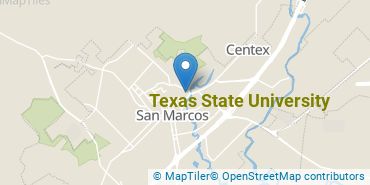
Contact details for Texas State are given below.
| Contact Details | |
|---|---|
| Address: | 601 University Dr, San Marcos, TX 78666 |
| Phone: | 512-245-2111 |
| Website: | www.txst.edu |
How Do I Get Into Texas State?
You can apply to Texas State online at: https://prod.applytexas.org/
Admission Requirements for Texas State
| Submission | Required? |
|---|---|
| High School GPA | Recommended |
| High School Rank | Required |
| High School Transcript | Required |
| College Prep Program | Required |
| Recommendations | Neither required nor recommended |
| SAT or ACT Scores | Considered but not required |
| TOEFL | Required |
How Hard Is It To Get Into Texas State?
Approximately 34% of accepted students are men and 66% are women. The acceptance rate for men is 66%, and the acceptance rate for women is 72%.
Average Test Scores
About 50% of students accepted to Texas State submitted their SAT scores. When looking at the 25th through the 75th percentile, SAT Evidence-Based Reading and Writing scores ranged between 500 and 600. Math scores were between 490 and 580.
Can I Afford Texas State University?
The net price is calculated by adding tuition, room, board and other costs and subtracting financial aid.
Student Loan Debt
Almost 66% of college students who graduated with the class of 2018 took out student loans, but that percentage varies from school to school. At Texas State, approximately 54% of students took out student loans averaging $6,262 a year. That adds up to $25,048 over four years for those students.
The student loan default rate at Texas State is 2.0%. This is significantly lower than the national default rate of 10.1%, which is a good sign that you'll be able to pay back your student loans.
Texas State University Undergraduate Student Diversity
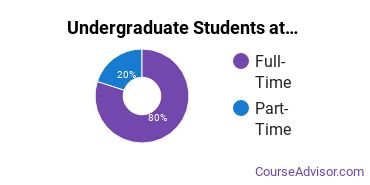
There are also 4,689 graduate students at the school.
Gender Diversity
Of the 26,527 full-time undergraduates at Texas State, 39% are male and 61% are female.
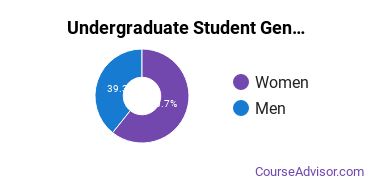
Racial-Ethnic Diversity
The racial-ethnic breakdown of Texas State University students is as follows.
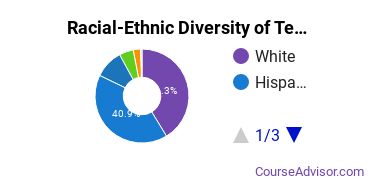
| Race/Ethnicity | Number of Grads |
|---|---|
| Asian | 664 |
| Black or African American | 2,627 |
| Hispanic or Latino | 10,851 |
| White | 10,951 |
| International Students | 137 |
| Other Races/Ethnicities | 1,297 |
Geographic Diversity
Texas students aren't the only ones who study at Texas State University. At this time, 31 states are represented by the student population at the school.
Over 83 countries are represented at Texas State. The most popular countries sending students to the school are India, China, and Mexico.
Online Learning at Texas State University
The following chart shows how the online learning population at Texas State has changed over the last few years.
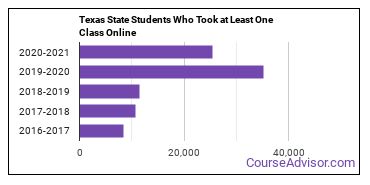
This school is the 38th most popular in Texas for online learning according to the online graduations recorded by the Department of Education for the academic year 2020-2021.
Online Growth Rankings of Texas State
The average growth rate over the last four years of online students at Texas State University was 164.0%. This is the #316 largest growth rate of all schools that are only partially online. This refers to all students at Texas State regardless of major.
When we speak of partially online, we are referring to schools whose online population is less than 50% of its total student body. Mostly online refers to those with online populations greater than or equal to 50%.
References
*The racial-ethnic minorities count is calculated by taking the total number of students and subtracting white students, international students, and students whose race/ethnicity was unknown. This number is then divided by the total number of students at the school to obtain the racial-ethnic minorities percentage.
- College Factual
- National Center for Education Statistics
- Image Credit: By Billy Hathorn under License
More about our data sources and methodologies.
Featured Schools
 Request Info
Request Info
|
Southern New Hampshire University You have goals. Southern New Hampshire University can help you get there. Whether you need a bachelor's degree to get into a career or want a master's degree to move up in your current career, SNHU has an online program for you. Find your degree from over 200 online programs. Learn More > |
